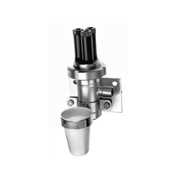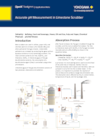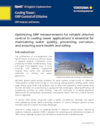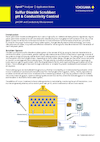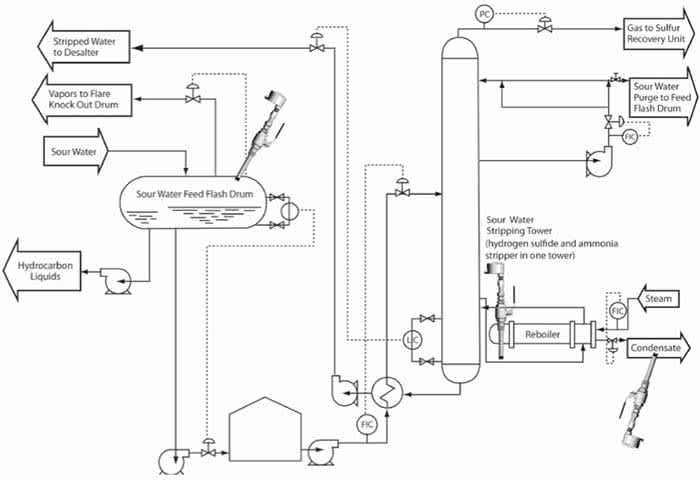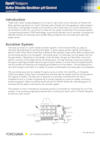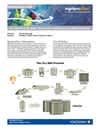Yokogawa has focused on creating fittings that are quick to install and easy to maintain, saving time and reducing costs.
Standardization allows electrodes with DIN dimensions to be directly mounted into a fitting. For other types, a mounting kit is available. Various construction materials are offered to ensure the best solution for any process, considering chemical resistance, pressure, and temperature requirements.
- Wide choice of construction materials.
- High degree of standardization reduces spare holding requirements.
- Direct mounting of sensors with DIN dimensions.
- Liquid earth pin for stable measurements.
- High pressure and temperature specifications.
- Chemical cleaning systems as an option.
- Electrolytically polished stainless steel fittings for optimal corrosion resistance.
Details
What Are the Benefits of the NPT/Flow Fittings FF20/FS20?
From a practical plant aspect, the optimal mounting place of a sensor is in a by-pass behind a sample valve. For these applications, the complete flow fittings are the optimal solution. They are provided with a ring to hold a calibration dish for easy cleaning and maintenance.
Features
- Wide choice of construction materials
- Easy calibration and maintenance using the calibration dish
- Changeable liquid outlet position (right or left)
- Wall mounting bracket
- Possible to decrease temperature and/or pressure
In-line measurement
- Real-time measurement gives better process control
- Low stability and short life by exposure to process P/T
- Limited access for maintenance
- High operating costs under severe process conditions
FF20/FS20 Specifications
Process connections for fittings
2-, 3- and 4-hole fitting: 1/2” NPT or flange LAP-joint (DIN or ANSI) see model code
Nominal pipe size for mounting subassemblies
1-hole: DN20
2-hole: DN50
3-hole: DN50
4-hole: DN80
Temperature
Min: -10°C
Max: depending on material and application (see figure 1)
Flow rate (fittings)
0.1 to 10 l/min (depending on application)
Max. 6 m/s
Resources
For control of batch neutralization, a pH measurement coupled with a timer-controlled chemical feed scheme provides very satisfactory results.
This system can be adapted for either acid waste or alkaline waste neutralization.
Wet scrubbers are used in utilities, paper mills, and chemical plants to remove sulfur dioxide (SO2) and other pollutants from gas streams. Undesirable pollutants are removed by contacting the gases with an aqueous solution or slurry containing a sorbent. The most common sorbents are lime, Ca(OH)2, and limestone, CaCO3.
Optimizing ORP measurements for reliable chlorine control in cooling tower applications is essential for maintaining water quality, preventing corrosion, and ensuring work health and safety.
Process liquid analyzers such as pH meters, conductivity meters, ORP meters, and density meters play an important role at electrolysis plants in the control of concentrations of various process solutions. This requires both precision and stability under harsh conditions that include highly corrosive substances, high temperatures, and many impurities.
Cyanide-bearing wastewater from mining and electroplating facilities and certain types of chemical plants is toxic and must be treated by oxidation with chlorine or chloride to bring the cyanide concentration within regulatory limits.
Industry:Electrical and Electronics
Sour Water is the wastewater that is produced from atmospheric and vacuum crude columns at refineries. Hydrogen sulfide and ammonia are typical components in sour water that need to be removed before the water can be reused elsewhere in the plant.
Power plant boiler houses designed to burn coal or high sulfur oil are required by Federal and State pollution regulations to "scrub" (remove) sulfur dioxide from flue gasses to meet emission limits. SO2 in flue gasses is known to be harmful to the environment, as it is one contributor to the formation of acid rain. pH control is critical for the proper functioning of the scrubber system.
Many Ethanol plants running today are using a combination style pH electrode with a non-flowing reference to measure pH in the Mash Slurry transfer line from the Mash slurry mix tank to cook. The Mash is being pumped out of the Mash Slurry tank is at approximately 180 °F and 40 to 60 psig.
Wastes have been considered to be a serious worldwide environmental problem in recent years. Because of increasing pollution, these wastes should be treated. However, industrial wastes can contain a number of valuable organic components. Recovery of these components is important economically. Using conventional distillation techniques, the separation of acetic acid and water is both impractical and uneconomical, because it often requires large number of trays and a high reflux ratio. In practice special techniques are used depending on the concentration of acetic acid.
Current trend for increasing mercury awareness throughout the public sector has caused the government to take action. Recently, the Environmental Protection Agency (EPA) has focused their efforts on controlling mercury levels produced in various coal fired power plants. Based on information from several case studies, the EPA developed the Mercury and Air Toxics Standards to cut back mercury emissions. The most popular technology utilized by coal plants to meet the new standards is a scrubber which cleans the off gas from the combustion process. ORP sensors can further monitor the effluent from these scrubbers to ensure optimal mercury emission levels are achieved. By closely monitoring the mercury concentrations in the effluent, plant managers will be able to easily confirm their plants are meeting the EPA's standards.
Downloads
Instruction Manuals
General Specifications
Technical Information
- FLEXA/EXA PH Series Process pH Analyzers Measurement System and Applications (2.4 MB)
- Best Practice pH Installation and Maintenance Manual (824 KB)
- A Word About Buffers
- Care & Maintenance in High Purity Water (85 KB)
- FF20/FS20/FD20 Ordering Matrix (85 KB)
- Temperature Compensation (115 KB)
- Wet vs Dry Electrodes, Problems and Solutions (111 KB)
Engineering Tools
- FF20/FS20 Fittings for pH and ORP (103 KB)
Videos
How to install a Bellomatic probe in a holder and perform necessary maintenance.
Looking for more information on our people, technology and solutions?
Contact Us